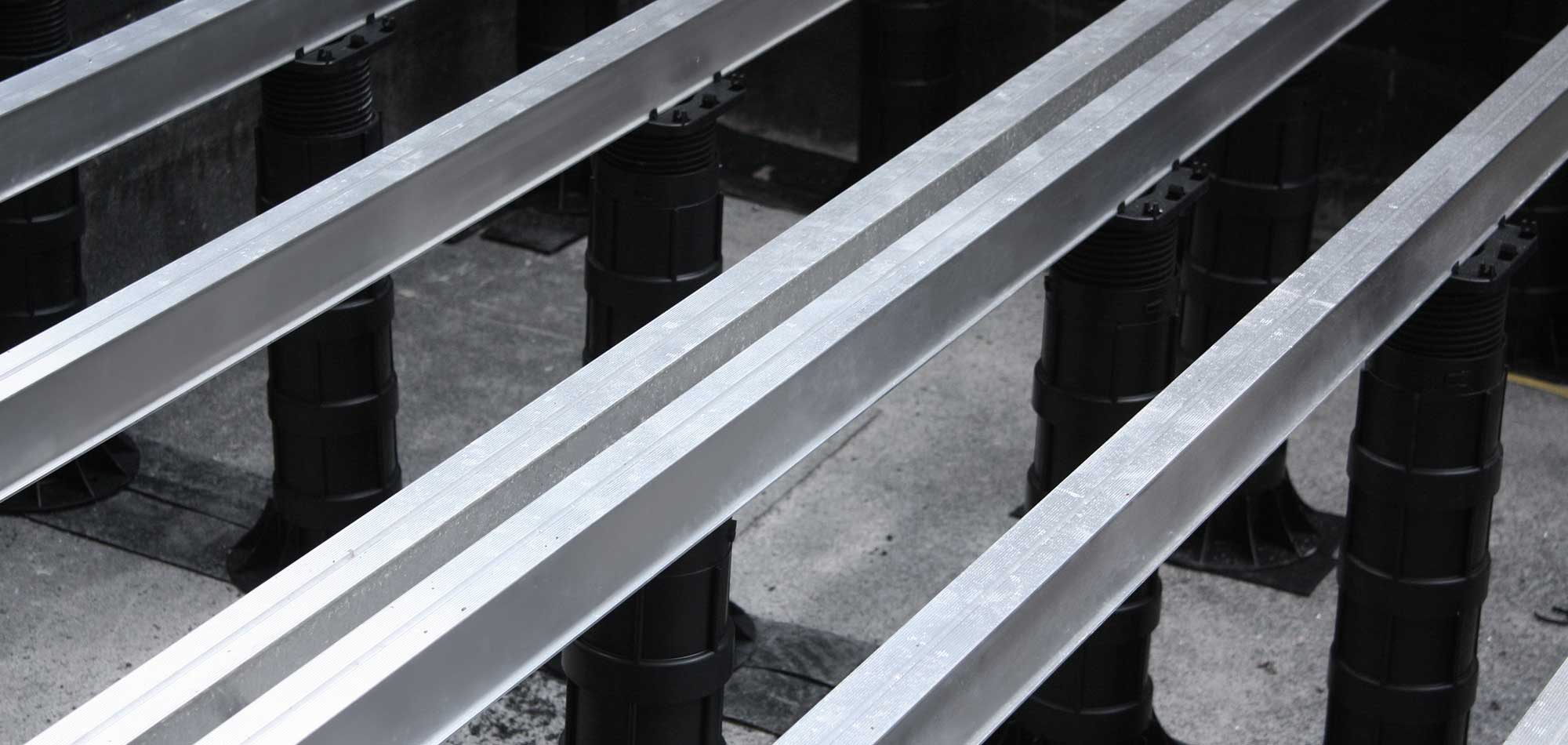The maximum spacing between decking joists is a critical factor in ensuring a deck’s structural integrity, long-term stability and durability. Joists support the decking boards and distribute the load evenly across the frame, preventing sagging and structural failure. Understanding what constitutes appropriate spacing between decking joists is an essential aspect of considered design and a requirement for all safe, long-lasting decking systems.
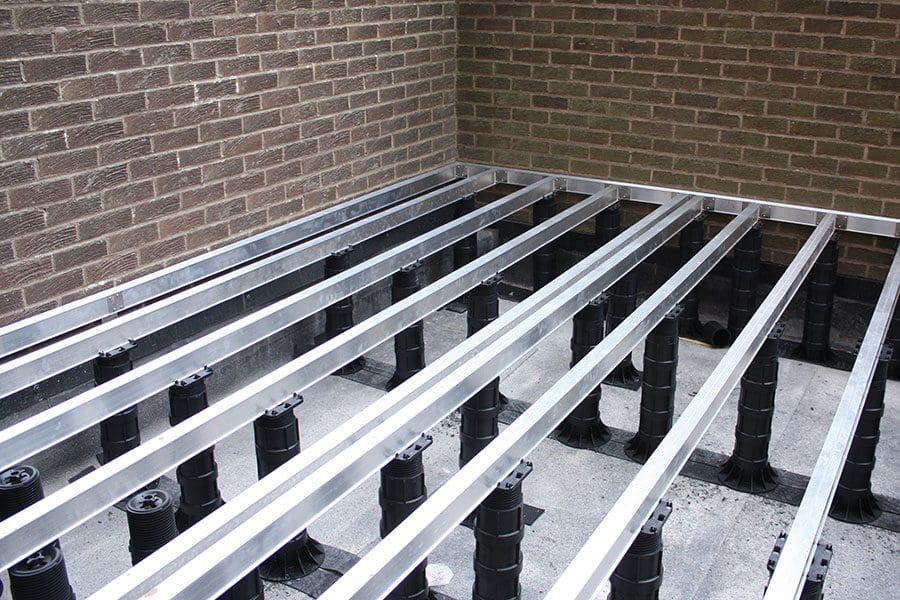
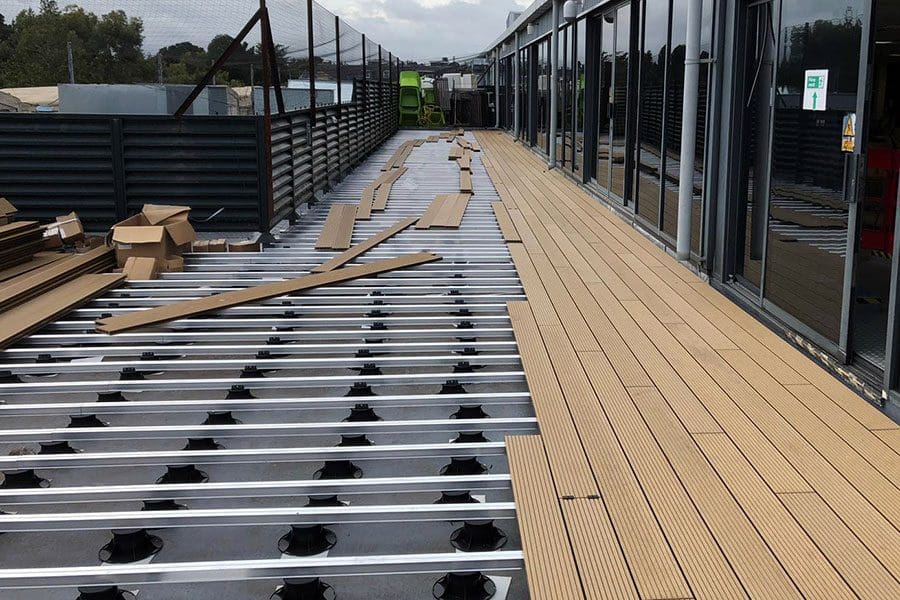
How far apart should joists be on a deck?
The optimal spacing between decking joists depends on several factors. These include the type of decking material, the anticipated load, and local building regulations. Before beginning projects, those responsible for construction should always consult relevant regulations. However, there are also some useful general guidelines to follow.
For traditional decking materials, such as timber or composite boards, a typical maximum joist spacing of 16 inches (40.6 cm) on-centre is common. On-centre refers to the practice of measuring from the centre of one joist to the centre of the next. This spacing ensures adequate support and minimises the risk of sagging or bouncing between the joists. In some cases, you can reduce the spacing to 12 inches (30.5 cm) on-centre. This is more common for thicker or heavier decking materials and environments where the deck is expected to experience significant loads.
On the other hand, thinner or lighter decking materials, such as PVC or aluminium, may allow for wider joist spacing. In such cases, you can increase the spacing to 24 inches (61 cm) on-centre, or even higher. With premium RYNO aluminium decking joists for waterproofed balconies, terraces and roofs, the maximum spacing permitted is 80 cm or 31 inches.
The two main reference points when constructing decking are local building regulations and manufacturers’ recommendations. While general rules of thumb are helpful, manufacturers’ guidelines always supersede them.
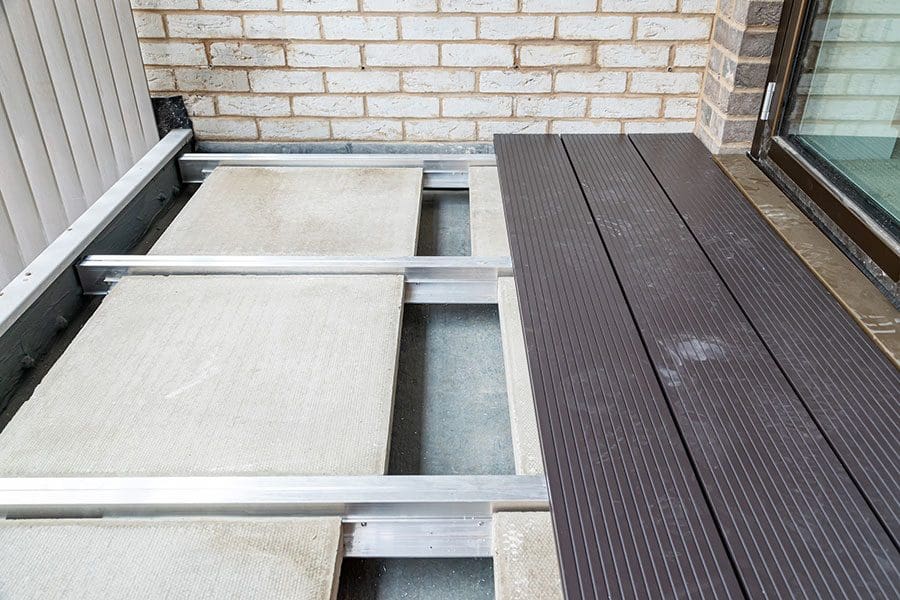
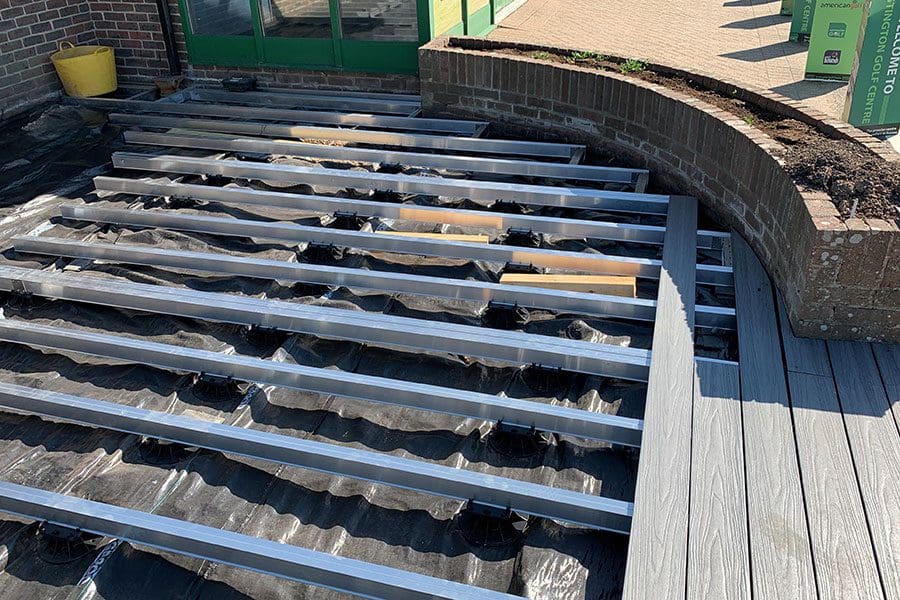
The impact of load on joist spacing
In addition to decking material, the anticipated load on the deck will influence the maximum spacing permitted between joists. If the deck is subject to heavy loads, such as significant foot traffic or heavy items like hot tubs or outdoor furniture, closer joist spacing is recommended. In these cases, wider spacing may result in excessive deflection, resulting in an unstable deck and potentially compromising its structural integrity.
Just as manufacturers’ guidelines supersede general rules, so do local building regulations. These regulations are designed to ensure the safety and stability of decks and typically encompass much more than deck joist spacing. For instance, recent UK government regulations require all constructions on the external walls of residential buildings above 11 metres to use non-combustible materials. This is significantly impacting construction standards, encouraging the adoption of new joint materials, and forcing property owners to undertake extensive remediation work.
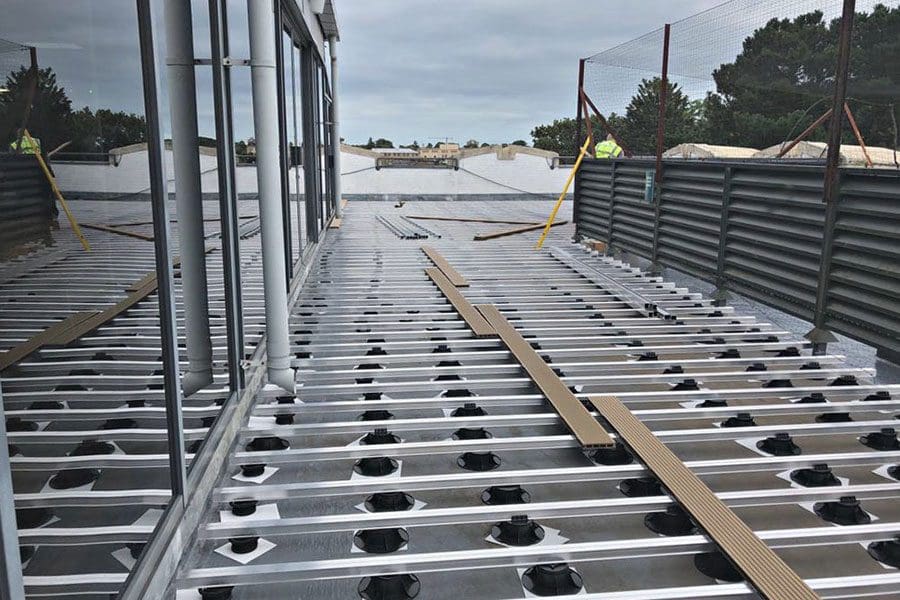
Decking joist layout
Beyond the maximum spacing between joists, other factors contribute to a deck’s overall strength and stability. The decking joist layout, joist size and grade, their attachment to the ledger board and support posts, and the use of proper hardware and fasteners all play significant roles in constructing a structurally sound deck. Adequate bracing, ventilation, and regular maintenance are also essential for deck longevity.
RYNO decking joists offer project flexibility
RYNO aluminium joists are strong, lightweight and designed to meet the needs of ambitious construction professionals who require high-quality, compliant materials for their decking projects. We developed the RYNO TerraSmart® and RYNO BalcaSmart® decking systems to provide professionals with adaptable, customisable, performance-oriented decking solutions. They can be used in combination with the RYNO decking boards to achieve the perfect finish.
RYNO’s non-combustible aluminium decking joists are complemented by several additional components that make RYNO decking solutions some of the most adaptable and easy to install in the industry. For instance, RYNO RDC Adjustable Joist Cradles support conventional decking and flooring systems, offer millimetre-accurate height adjustment and ensure positioning joists is as easy as possible.
Similarly, the RYNO RD-FR Non-Combustible Joist Support Pedestal enables you to elevate and support joists. Holes in the base enable you to fix the pedestal to the substrate if required and each pedestal is manufactured from non-combustible steel and benefits from zinc-nickel electroplating for corrosion resistance. The pedestals are available in several adjustable height ranges to accommodate diverse project requirements.
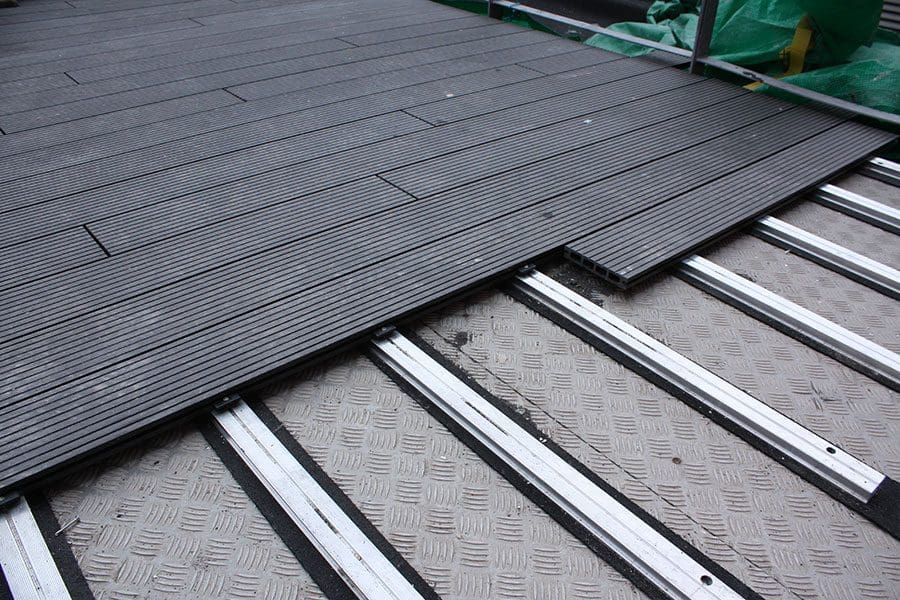
The benefits of aluminium and composite decking solutions
Aluminium decking solutions, like RYNO TerraSmart®, are an excellent choice for several reasons. These include:
- Aluminium is a strong, relatively lightweight and versatile material for decking solutions.
- It is non-combustible, ensuring it is suitable for remediation projects.
- It is weather-resistant and innovative powder coatings make it scratch-resistant.
- Aluminium is a low-maintenance decking material that does not need significant amounts of care and will last far longer than other materials.
- Good thermal conductivity ensures heat dissipates quickly, preventing aluminium boards from getting too hot.
RYNO composite decking is also a popular option. It shares many of the strengths associated with aluminium. It is:
- Durable, long-lasting and weather-resistant.
- Available in a wide range of finishes and styles, facilitating greater customisation.
- Low maintenance and requires relatively little regular maintenance work.
- More environmentally friendly due to the materials and manufacturing process used.
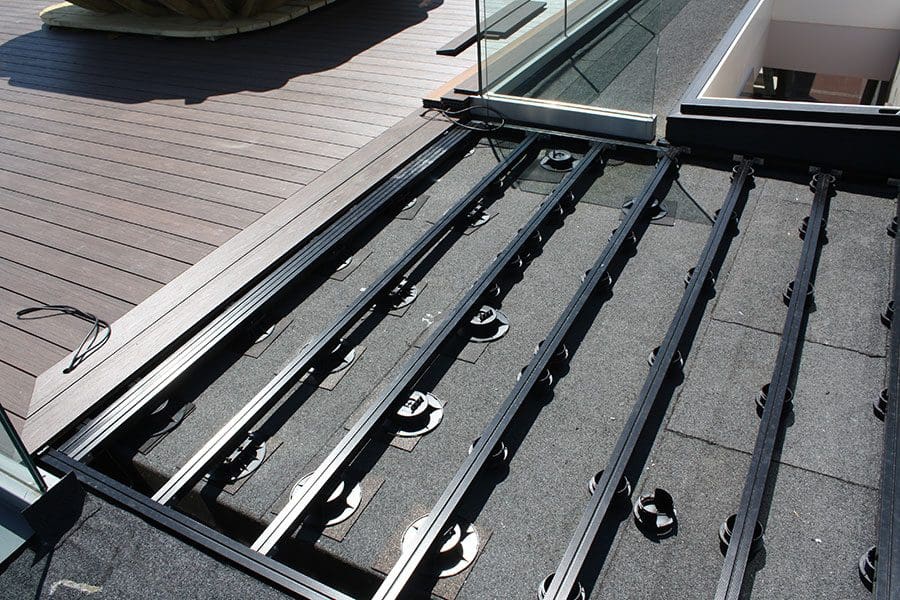
Decking joist spacing and RYNO solutions
Spacing between decking joists is a crucial aspect of deck construction. While general guidelines for materials like timber suggest a spacing of 16 inches (40.6 cm) on-centre, the reality is that spacing will usually depend on joist materials, manufacturers’ guidelines and local building regulations.
At RYNO, we want to provide construction professionals with choices and ensure you can realise your design vision. At the same time, our decking systems and components are manufactured to meet and, in many cases, exceed current building regulations, protecting the value of your construction for the foreseeable future.
